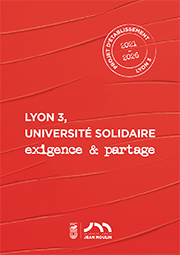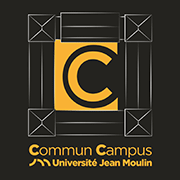AccueilRechercheLes productions scientifiquesThèsesThèses soutenuesThèses soutenues - 2006-2020Thèses soutenues - 2010
-
Partager cette page
- Recherche,
MARINESCU Alina-Daniela
Reflets. Les fonctions de la réprésentation du miroir en peinture et en littérature
Thèse en Lettres - Littérature comparée Soutenue le 5 mars 2010 Thèse en cotutelle avec l'Université de Bucarest
Cette étude se propose la recherche d'un paradigme anti-mimétique de l'art dans les expressions du miroir déformant et des cas particuliers de la réflexion non-mimétique depuis l'Antiquité jusqu'à la fin du XVe siècle. Nous avons choisi de situer notre recherche dans les espaces culturels grec et romain pour l'Antiquité et dans la culture italienne et française pour le Moyen Age et la première Renaissance. Comme il s'agit d'une étude pluridisciplinaire, nous avons analysé les occurrences du miroir déformant dans la littérature, la philosophie, la théorie de l'art, la peinture, mais aussi dans les sciences: l'optique et la catoptrique, en privilégiant surtout le dialogue entre le texte et l'image. En considérant le miroir déformant comme le symbole du paradigme anti-mimétique de l'art, nous avons suivi ses expressions selon quatre niveaux. Le premier est consacré à l'importance accordée par l'optique et la catoptrique à l'instrument spéculaire et en particulier à l'étude des lois de la réflexion dans les miroirs déformants. Le deuxième niveau, le niveau symbolique, est représenté par l'analyse des occurrences du miroir déformant et des cas particuliers de la réflexion non-mimétique dans la philosophie, la littérature et la peinture, en fonction de quelques thèmes et motifs liés à la spécularité. Le troisième niveau, celui esthétique, repose sur l'analyse des théories artistiques en suivant les deux paradigmes de l'art: la mimésis et l'anti-mimésis. Les fonctions de la représentation spéculaire en peinture constituent le dernier niveau de cette recherche où nous avons insisté surtout sur la déformation de l'image reflétée et sur son rôle méta-pictural.
This is a study of the anti-mimetic paradigm of art using the expressions of the distorted mirror and the specific cases of the non-mimetic reflection since Antiquity until the end of the 15th century. We have decided to place our research of the Antiquity in the Greek and Roman cultural spaces and of the Middle Ages and Early Renaissance in the Italian and French cultural spaces. In accordance with our multidisciplinary study, we have analysed the various occurrences of the distorted mirror in the areas of literature, philosophy, art theory, and painting, as well as in sciences, such as optics and catoptrics. By considering the distorted mirror as the symbol of the anti-mimetic paradigm of art, we have followed its expressions according to four perspectives. The first perspective considers the importance given by optics and catoptrics to the specular instrument and, in particular, to the study of the laws of reflection for the distorted mirrors. The second perspective, the symbolic one, is represented by the analysis of the occurrences of the distorted mirror and of the specific cases of the non-mimetic reflection in philosophy, literature and painting, and more specifically of some of the themes and motives related to the mirror. With the third perspective, the aesthetical one, we analysed the artistic theories, in particular the ones that consider the specular metaphor, by following the two paradigms of art: mimesis and anti-mimesis. The functions of the specular representation in paintings constitute the last level of our research where we have focused especially on the distortion of the reflected image and on its meta-pictorial role. Mots-clés : miroir, représentation, déformation, reflet, narcisse, toilette, femme, autoportrait Directeur de thèse : Pierre SERVET Membres du jury : Mihaela VOICI, Professeur, Université de Bucarest Cornel MIHAI IONESCU, Professeur, Université Dimitrie Cantemir, Bucarest Alexandru CALINESCU, Professeur, Université Ioan Cuza de Iassy Sorin ALEXANDRESCU, Professeur, Université de Bucarest Pierre SERVET, Professeur, Université Jean Moulin Lyon 3 Bruno PINCHARD, Professeur, Université Jean Moulin Lyon 3 Mention : Très Honorable avec les félicitations du jury Equipe d'accueil : Centre de littérature Jean Prévost



